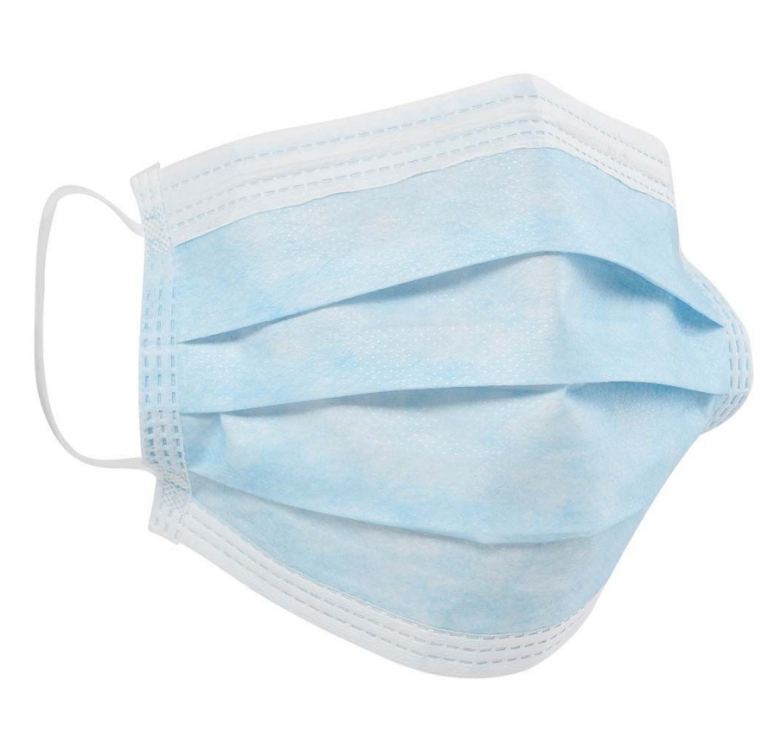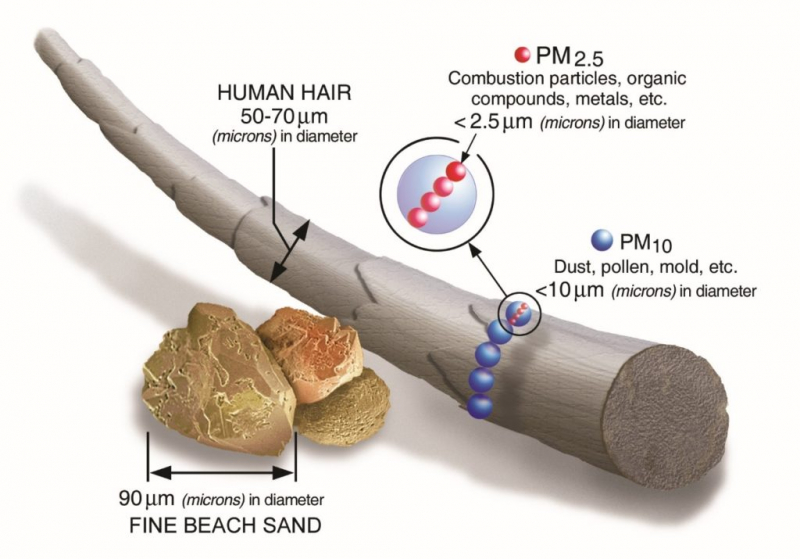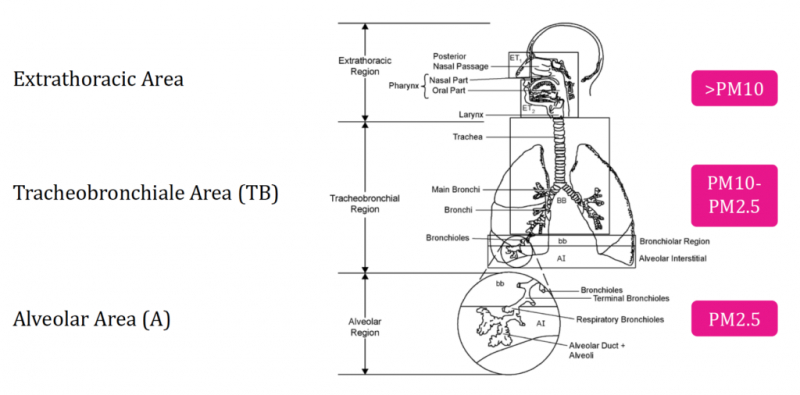PM 2.5 Air Pollution & Respiratory Health Effects
As of writing this article (Feb 10, 2020), Bangkok is in the midst of a Corona Virus panic. This is resulting in price controls being implemented on respirators and face masks. Let’s focus instead on a bigger threat to your long term health: air pollution and PM 2.5 particulates in the air.
Before the hype of the Coronavirus “outbreak” Bangkok was (and still is) engulfed in a murky haze of PM 2.5 air pollution. Mostly blamed on agricultural slash burning well to the north.
This burning is sending dangerous respirable particles (less than two and one-half microns or less in width) down to the capital, on the prevailing winds.
The public is being warned (rightly so) to wear protective masks. They are also warned to avoid strenuous outdoor activities, especially for those who are sensitive to, or at risk of lung illnesses.
Wearing a mask that is NOT rated to filter out PM2.5 is a waste of time and money and will just serve to hide your beautiful face.
IMPORTANT note: Surgical masks won’t work, neither will masks that are not properly fitted and that allows air to enter your respiratory system around the sides of the mask.

Air will take the path of least resistance when you breathe in. Fashionable Pitta masks will not work unless they are rated and approved for PM 2.5. Be certain to replace your PM2.5 masks every few days or when you notice that they are becoming difficult to breathe in.
Okay, so that’s the discussion on masks. But for most people (excluding Traffic Police, construction workers, street vendors, motorcycle taxis etc), the journey outside is only a temporary part of our 24 hour day.
So what is actually happening to your lungs and what exactly is your risk? Firstly, you need to understand how your respiratory system works when filtering out particles that enter it.

In very simple terms, your nose and throat are designed to filter out larger particles of dust. This is done by trapping dust in nose hairs, mucus and in the cilia of the throat area where it can be coughed up and removed.
Masks not rated for PM2.5 will also catch some of that particulate but its the small particulate stuff you need to worry about.
Particles less than 2.5 microns in size will make it all the way into the bronchial and alveolar regions of the lungs, where the gas exchange happens and oxygen enters your bloodstream through a network of capillaries surrounding the alveolar sacks.

When particles get as far as the alveolar region of the lungs, the immune system goes to work. Killer cells called macrophages ingest the particles, and it is eventually coughed up as sputum.
The problem is, that when there is too much work to do by the immune response system, there can be permanent scarring of the lungs at the alveolar region causing chronic obstructive respiratory disease (COPD) or worse (i.e. cancer).
COPD includes diseases like chronic bronchitis and emphysema, which make even doing simple tasks, very difficult to breathe. Now that you understand what it can do you need to understand that the body is quite resilient. The immune system, most of the time, does what it is supposed to do and so you should be safe.
Importantly, you must also understand that exposure time and concentration of dust respiration, is most important to understand your risks for COPD.
If you are only exposed to it for short periods of time and the concentrations are not too extreme, you will probably be OK.
COPD can take many years to develop (up to 20 years) or it may not develop at all. In the world of health and safety, we measure air particulate concentrations and calculate the 8-hour time-weighted average of exposure. This method is used to help determine the correct respiratory protection strategies.
Here is a bit more technical information on how dust can affect the lungs. Now, let’s discuss the exposure time.
We get daily reports on the AQI air quality index, but we need to think about how much daily exposure we have to that bad air.
- When driving, keep the mask on, especially while stuck in traffic.
- Keep doors and windows at home and at work, closed to the outside air pollution
- Consider purchasing good quality air filtration and purification devices for your household and office environment, especially for your bedroom.
- If you smoke, consider this a good time to quit
- Children and the elderly are most at risk from air pollution. Be sure to place good HEPA air purification systems into their room. You may also want to consider applying 3M Filtrete™ to the filters on your air conditioners.
By using suitable indoor air filtration/purification strategies, you are probably protecting yourself from 90-95% of your exposure time to this dust.
Samsung’s Cube AX9500 air purifier is one of the best you can get and is perfect for the average-sized bedroom. They are somewhat expensive but much cheaper than contracting COPD. They also have a pretty cool app for the phone to let you know about the quality of the air in the room.
If you haven’t done so already? check out this article that discusses the Bird/Loftus model on Why Accidents Happen in the workplace! You may be surprised to hear that effective and proactive Leadership in safety cultures plays a large role in preventing accidents.